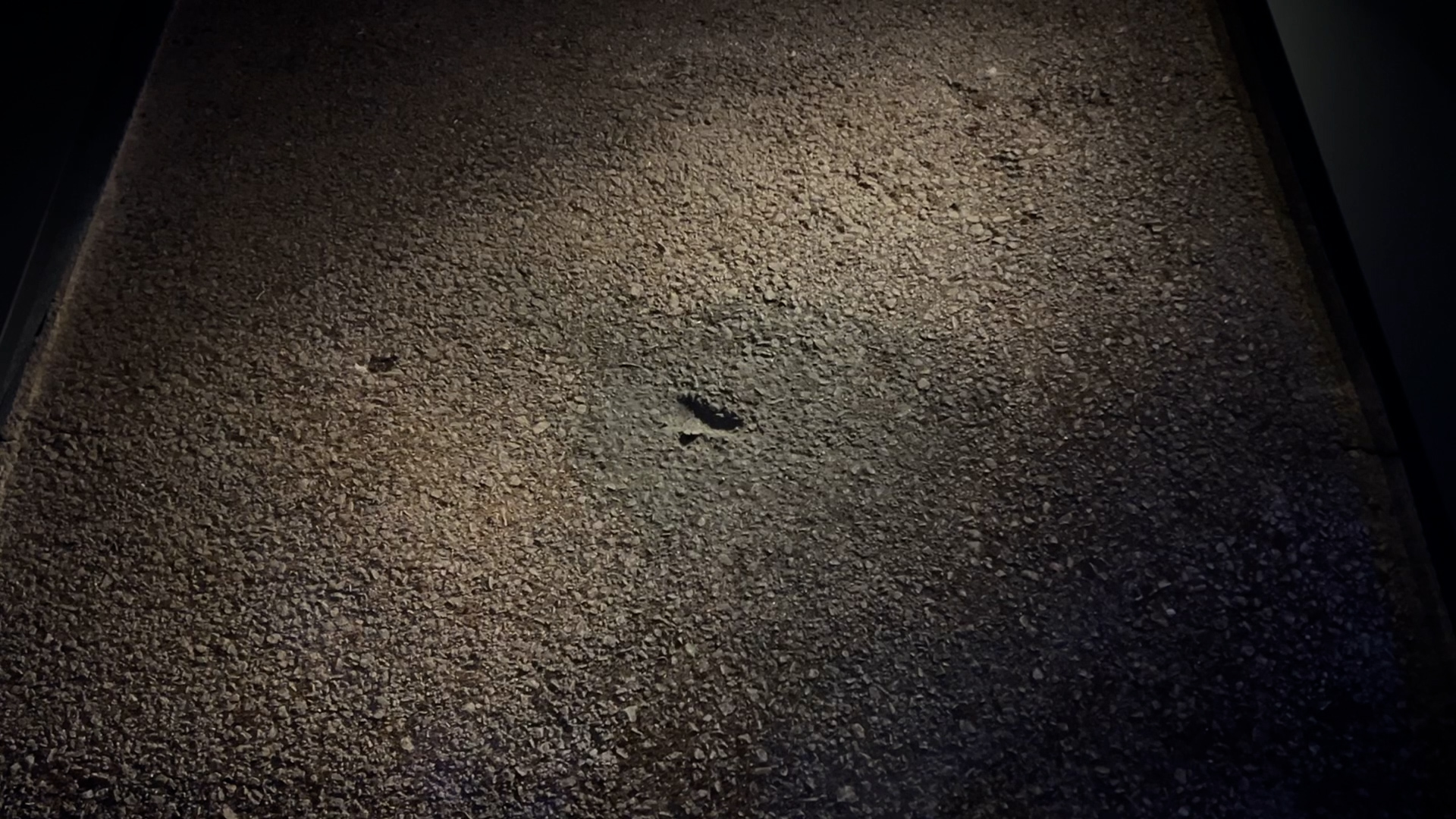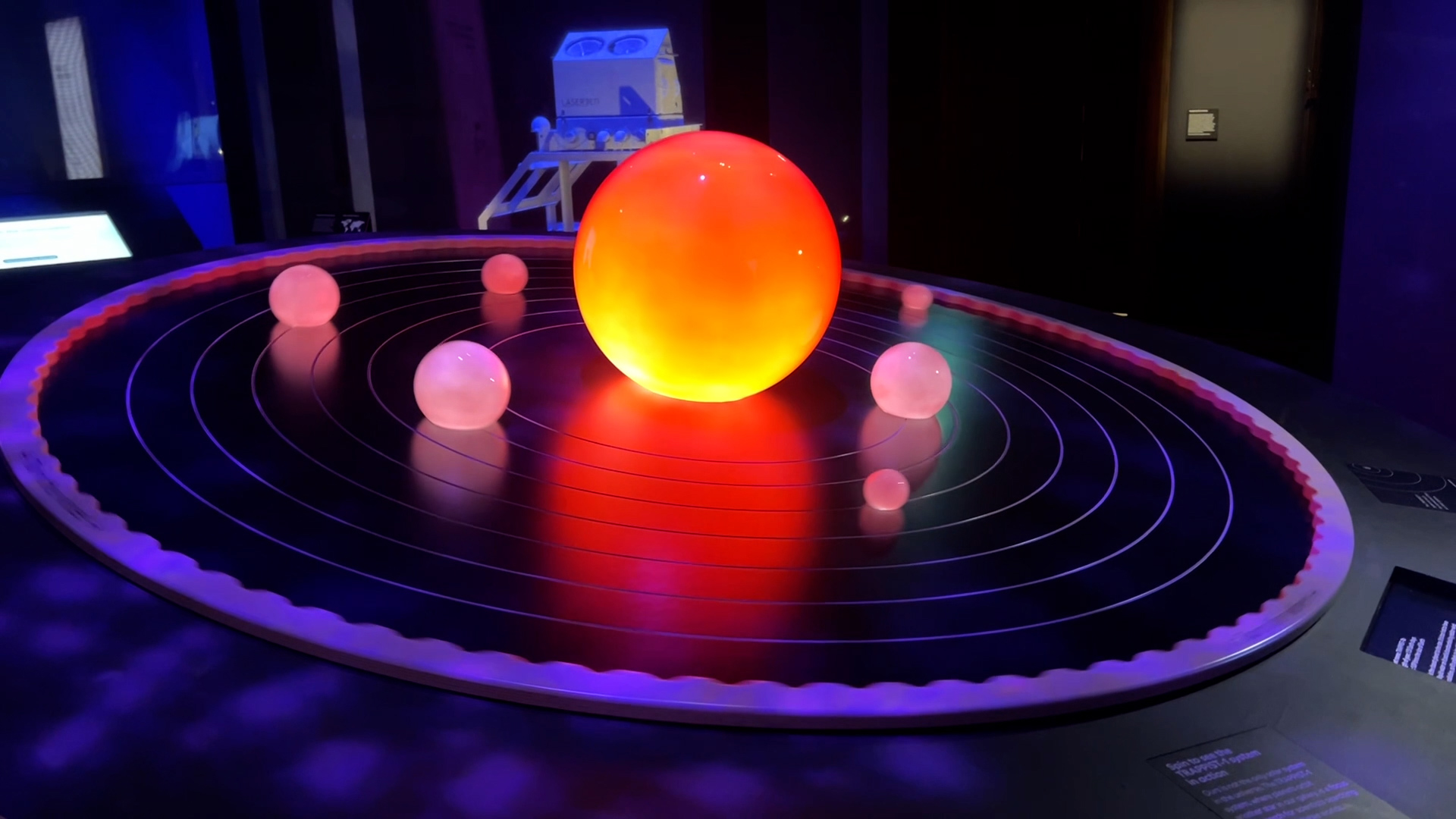If you were to ask scientists where life exists beyond Earth, they would correctly tell you that we do not know. There is so much that we do not understand about life on Earth, let alone about where life might emerge in space. However, asking them (like we did), if they were betting people, where would they go to look for life… that gives many intriguing answers.
IFLScience was invited behind the scenes of the Natural History Museum, London’s new exhibition Space: Could Life Exist Beyond Earth?. We got to smell the recreations of asteroid Bennu, Mars, and Titan and touch pieces of asteroids, the Moon, and Mars. It was a perfect opportunity to ask some experts where they’d put money on finding extraterrestrial life.
“Personally, I’m most excited about the icy moons around Jupiter and Saturn,” Sinead Moran, the exhibition lead, told IFLScience. “There are these worlds that have these icy crusts, but deep beneath them, there are these liquid oceans and there’s the potential for life to exist.”
“I would go for one of the icy moons of Jupiter or Saturn,” Professor Caroline Smith, Head of Collections and Principal Curator of Meteorites at the Natural History Museum, agreed. “These ocean worlds with a protective icy crust… underneath, there’s a good chance you’ve got liquid water, and liquid water is something you need for life.”
The diversity of life in the deepest oceans… far away from sunlight, people never thought there’d be anything life down there. And yet these areas are teeming with life. You could have the same things happening on the icy worlds.
Prof Caroline Smith
These icy moons include Europa, Ganymede, and maybe Callisto around Jupiter and Enceladus around Saturn. The Cassini mission saw geysers erupt from Enceladus filled with complex chemicals, making that deep ocean certainly a place worth investigating further.
“If you think about the discoveries that have been made even in the last 40 or 50 years, about the diversity of life in the deepest oceans of the Earth far away from sunlight, you know people never thought there’d be anything life down there. And yet these areas sometimes are teeming with life. You could have the same things happening on the icy worlds,” Smith said.
There are no missions currently planned to return to Enceladus, but the European Space Agency’s JUICE mission will visit the three icy moons of Jupiter, focusing on Ganymede, and NASA is sending Europa Clipper specifically to Europa.
The next mission to Saturn is Dragonfly, also part of the exhibition. It’s a flying vehicle, inspired by Ingenuity, the Mars helicopter, and will study Saturn’s moon, Titan. Titan has rain, rivers, and seas – the only other Solar System world that has those apart from Earth. They are made of hydrocarbons, mostly methane, and maybe that cycle is enough to sustain lifeforms, but not as we know it.
There are other icy moons in the Solar System with geysers, such as Triton around Neptune, but there are no plans to go back to the ice giants, Uranus and Neptune, just yet – although many want one.
“Really, the case for a big mission, an orbiter to both Uranus and Neptune, I think, is so overwhelming!” Professor Brian Cox told IFLScience last year. “If I was one of these billionaires… just floating around with all my money, I would fund two missions: I’d fund an orbiter to Uranus and an orbiter to Neptune.”

We can certainly say that the Winchcombe meteorite was a hit!
Image Credit: © IFLScience
The exhibition has meteorites and pieces of asteroids that are helping scientists understand how life-critical molecules might have gotten to Earth. Even the tarmac of the British driveway that was hit by the Winchcombe Meteorite features. But of course, a lot of focus is dedicated to Mars, the prime place for the current search for alien life.
“We have two NASA rovers currently operating on Mars, and those are tooled up with scientific payloads that are specifically designed to look for those sorts of chemical and physical biosignatures of potential Mars life. So we’re looking for those chemical physical clues, those fingerprints, to see whether there was the physical and the chemical additions for life to start,” Smith, who is involved with the Perseverance rover, told IFLScience.
Perseverance has so far found a rock, dubbed Cheyava Falls, which is the strongest evidence of something possibly modified by life. It is the weakest possibility of life signal on NASA’s CoLD scale, but it is the best we have for now.
The exhibition also has a true-scale model of the European Space Agency’s Rosalind Franklin rover, which is expected to fly to Mars in 2028. For the first time, we will have a robot on Mars that can dig, as the Franklin rover can drill down to a depth of 2 meters (6 feet). The surface of Mars is exposed to a lot of ultraviolet radiation, so if life exists on Mars, it might be underground. The rover was even tested in the Boulby Underground Lab, which we visited last year.

A model of the Trappist-1 system and behind a LaserSETI device.
Image Credit: © IFLScience
We can also throw in the clouds of Venus or the possibly salt-rich ocean beneath the heart of Pluto as places that people are looking into for alien life. Perhaps, in the Solar System, it’s just us, but the exhibition encourages us to look beyond. There are insights into JWST – although news of that exoplanet with a biosignature was greatly exaggerated – and how telescopes are studying the now over 6,000 known exoplanets.
There is also a new instrument developed by the SETI Institute. Humanity has just started using laser light to communicate with spacecraft in deep space – and it might one day bring high-speed internet to Mars. But advanced civilizations might already be using those lasers, and the LaserSETI devices aim to spot those and other types of technosignatures.
The question of whether we are alone in the universe is never going to leave us until we find an answer. Where will you place your bet?
Source Link: “There's The Potential For Life To Exist”: Where Is Life Most Likely To Be In The Solar System?